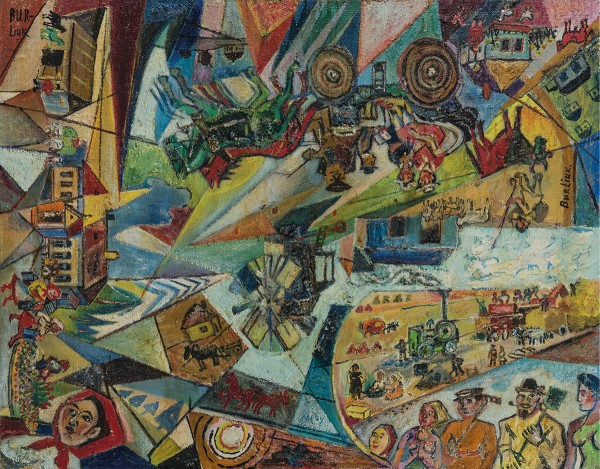The artist is Burliuk

In 1922, David Burliuk with his wife Marusia and two sons went through the ocean to the country of dreams and hope. In the memoirs, he wrote: “In September 1922, two young children and I were thrown out by everyday storm on the Manhattan rock in New York without money, strangers, not knowing the English language … so that we would not die from starvation, I began to look for a piece of bread. My paintings brought to the United States from the Pacific Islands were not interested in anyone, and no one offered even an insignificant fee for them. There were few Russians at that time in New York “.
However, Burliuk, thanks to his tireless, “seething”, active nature, soon turned out to be the brain center of the literary and artistic world of the newspaper “Russian Voice”, in which he worked until 1940.
Burliuk’s favorite idea of the democracy of new art led the artist to create a very peculiar theory. It came down to the fact that in America, the greatest country in the world, “everyone should be able to constantly look at the paintings of their great contemporaries”. Like the Small Dutch, Burliuk intended to write small canvases, inexpensive in price so that they could be acquired by poor Americans. Following this new concept of art, Burliuk really began to write small works dedicated to the life of American, Russian or Ukrainian contemporaries. Often stylizing them under the primitive, Burliuk thus sought the path to the heart of the audience. Figure line, always prevailing at Burliuk, literally blossomed in his American works. Scenes with cows, horses, women and men are not souvenir pictures, although the raid of souvenility, deliberately introduced by a deeply professional artist, of course, takes place in his works of this kind.
The “Landscape with a wagon and a mill” written in the 30-40s refers us to the futuristic searches of Burliuk in the early 1910s, when he enthusiastically experimented on the compositional and textured possibilities of painting. It was then that he developed a reception of writing a landscape from four points of view. Decades later, the artist repeated the same technique and made it even more visual, placing mill wings in the center, as if setting the rotational movement of the whole composition.
As in the early works, the American Burliuk is fact. Without caring about aesthetic sophistication, he creates a peculiar world of the good, simple being of ordinary people enjoying life. Perhaps this was expressed in this dream of the perfect and harmonious future of mankind, called by him futurism?